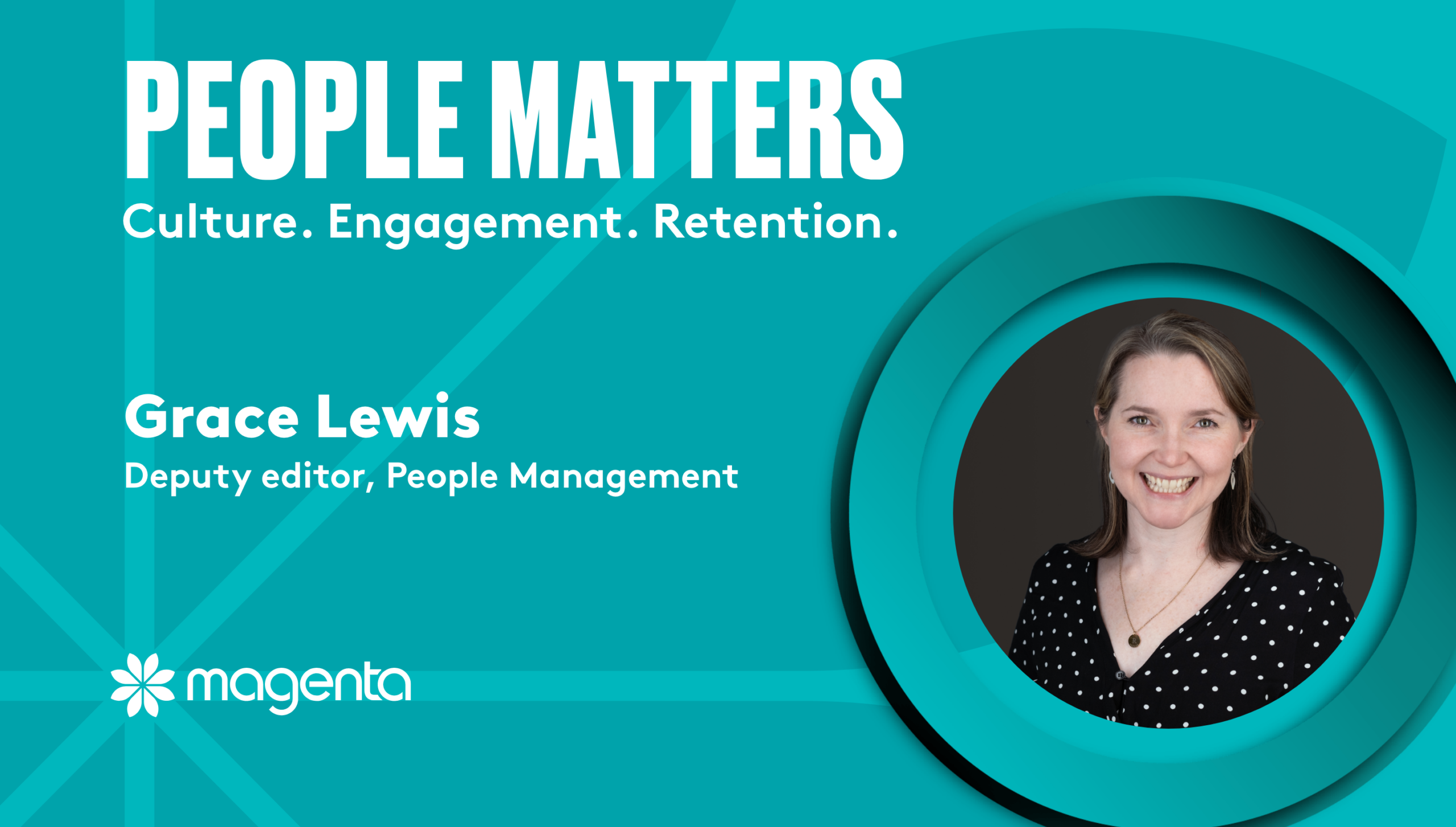Grace Lewis joins us for this week’s People Matters Q&A. Her work as deputy editor of People Management magazine brings a wealth of knowledge on how to find the right talent, how to attract it and how to retain it.
What’s key when it comes to managing a diverse workforce?
Transparency and communication. It’s essential to avoid the emergence of cliques where louder voices and groups become the dominant force and more diverse needs get lost in the conversation. People should feel comfortable talking about what’s bothering them and what they’re excited about. We need employees to want to talk to and learn from their peers when they come to work.
We spend a lot of time at work, and if you’re not happy there, it will have a knock-on effect on everything from health and wellness to engagement and performance. Having dedicated spaces where people can air their grievances is critically important. Equally, having forums and group discussions is vital. Whether that’s diversity networks such as working mum groups or platforms that encourage idea and story sharing among dispersed teams. The key is to cater to various needs so that everyone feels like they can be themselves at work.
How do HR and workplace professionals encourage a sense of community and belonging?
It’s important to use different mediums to have discussions. The most successful organisations aren’t afraid of experimenting with various conversational channels to ensure everyone feels included.
Today, everyone is working from all over the place. Therefore, we need to ensure that we don’t leave anyone behind – that means not forgetting to adapt to those people on a school run who won’t be around at 3 pm, for example.
Companies must also promote and celebrate diversity. We’ve seen a rise in this with the implementation of flexible bank holidays for multi-faith employee bases. UK bank holidays are linked to Christian religious festivals such as the Easter weekend and Christmas, but many staff may appreciate being offered to swap those days to have more time off over Ramadan, Eid or Diwali.
Gender and race tend to dominate the diversity discussion, but there are plenty of cultural diversities that also should be considered, such as faith. The same goes for after-hours events. We need to provide opportunities for employees to get together in casual settings that aren’t centred around alcohol to prevent the stigmatisation of those that don’t drink. The key is to be curious about inclusivity.
What do you think is the best way to manage workplace conflict?
The impact of conflict often comes down to the way in which it’s managed. People need space to air grievances in a non-judgemental way and speak freely without repercussions. We’ve all been in situations where we’re not happy at work, but it’s important that things don’t fester. Through the right channels, we can ensure people feel understood and heard, and that can go a long way to resolving issues and keeping morale up.
What advice would you give to companies that are struggling to engage or retain their workforce?
Focus on creating a culture of openness, transparency and community. Give people a reason to come to work other than their job. Give people an identity, a sense of achievement and the ability to progress and develop. It’s vital that people feel that they are part of something, by offering everyone the environment and support in which they can contribute and achieve. But above all, have empathy.
We’ve focused on talent retention, but what’s the best approach when it comes to talent attraction?
Now is the time to remodel the traditional approach to recruitment. We need to provide staff with a platform to tell their stories. The best company advocates are the employees themselves. If they are sharing their stories, then it becomes much clearer what it’s like to work at an organisation.
It’s also important to maintain good relationships with staff when they leave. At present, the government is trying to motivate older individuals and retirees back into the workforce – companies should therefore redevelop their learning and development programmes and tailor these towards returners too.
Put yourself in the shoes of such an individual. How can they be contacted? What kind of working perks would they like? Reaching out to local communities, sharing opportunities, and focusing on giving people the flexibility and options they need to succeed in the workplace is key. We need to speak to their needs so that they immediately feel like they can become part of the team.
Any other thoughts on how to plug the talent gap?
Skill shortages are a major challenge across almost every industry. However, a major issue lies in the fact that we’re trying to plug current shortages without thinking about what the future world of work will look like. Workforce planning is a pet peeve for HR professionals because we don’t know what’s coming. How can you design a job for now that will fill the shortages in the future?
There’s always this conflict between hiring people for skills or fit. Skills you can teach and train, but fit comes down to who they are as an individual. You just need the right people that are willing to learn, and willing to adapt. It’s a hard balance to strike. Companies are typically thinking about digital challenges and pathways to net zero, all while successfully running their businesses in the here and now with plenty of holes in the workforce.
It’s important to try to lean into addressing these challenges. Companies should focus on diversity to drive greater debate and innovation in the workforce. They should also think about culture and social impact to recruit top talent. Newer generations don’t just want money anymore. The social consciousness of the next generation is having sway – by being more creative and trying to reach out to people in ways that speak to and resonate with them, companies are likely to find success.
People Matters series:








